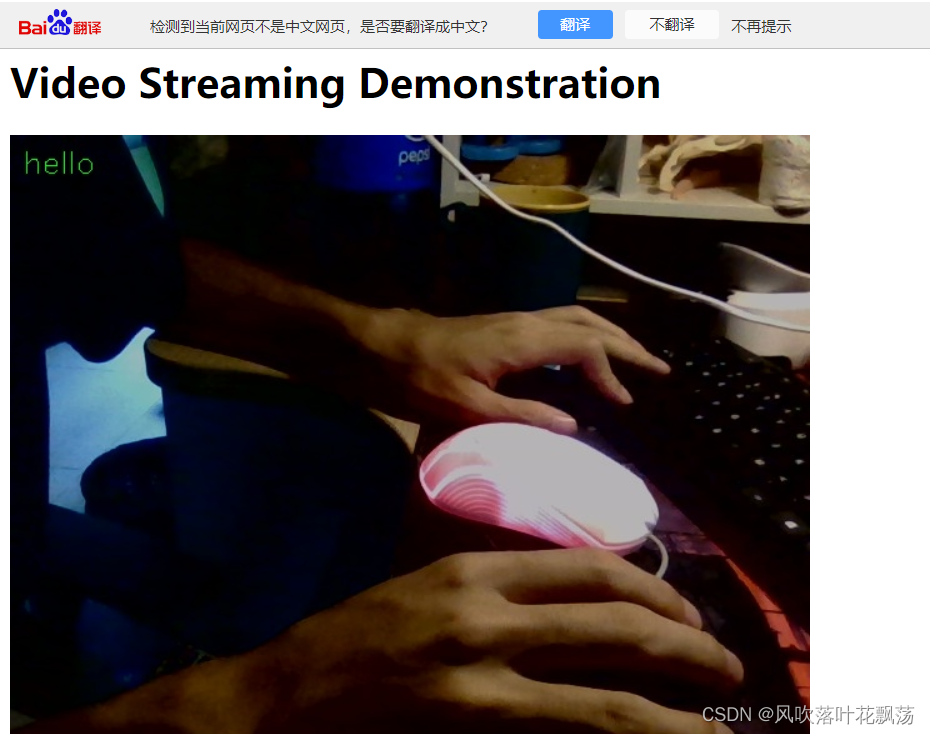flask+python 实时视频流输出到前台
二、问题描述:
1。调用摄像头获取视频流
2。将视频流处理并传递给浏览器
3。不是录制后处理,而是边录制边处理,边传递
4。 flash后台进行处理,而不是在前端处理
三、程序
1、后端处理程序
server.py
from flask import Flask, render_template, Response
import cv2
import time
class VideoCamera(object):
def __init__(self):
# 通过opencv获取实时视频流
self.video = cv2.VideoCapture(0)
def __del__(self):
self.video.release()
def get_frame(self):
success, image = self.video.read()
# 在这里处理视频帧
cv2.putText(image, "hello", (10, 30), cv2.FONT_HERSHEY_SIMPLEX, 0.8, (0, 255, 0))
#
# 因为opencv读取的图片并非jpeg格式,因此要用motion JPEG模式需要先将图片转码成jpg格式图片
ret, jpeg = cv2.imencode('.jpg', image)
return jpeg.tobytes()
app = Flask(__name__)
@app.route('/') # 主页
def index():
# jinja2模板,具体格式保存在index.html文件中
return render_template('index.html')
def gen(camera):
while True:
start_t=time.time()
frame = camera.get_frame()
#print('{0}'.format(time.time()-start_t))
# 使用generator函数输出视频流, 每次请求输出的content类型是image/jpeg
yield (b'--frame\r\n'
b'Content-Type: image/jpeg\r\n\r\n' + frame + b'\r\n\r\n')
@app.route('/video_feed') # 这个地址返回视频流响应
def video_feed():
return Response(gen(VideoCamera()),
mimetype='multipart/x-mixed-replace; boundary=frame')
if __name__ == '__main__':
app.run(host='0.0.0.0', debug=True, port=5000)
2、前端html
templates/index.html
<html>
<head>
<title>Video Streaming Demonstration</title>
</head>
<body>
<h1>Video Streaming Demonstration</h1>
<img src="{
{ url_for('video_feed') }}">
</body>
</html>
注:在py文件同目录下,新建一个templates,然后新建一个index.html的文件,将上面内容复制进去即可
